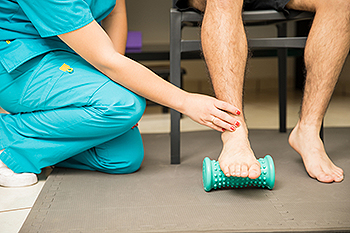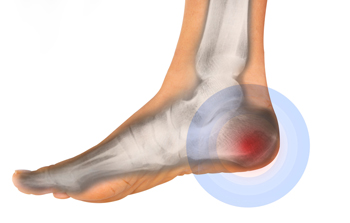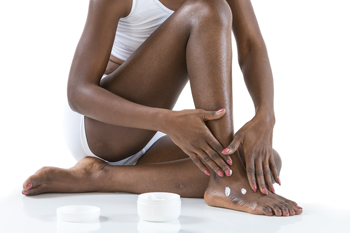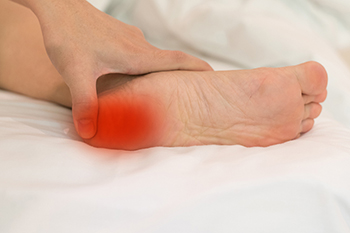
Plantar Fasciitis is a common foot ailment that causes pain in the heel of the foot. The facia, or band of tissue that connects the heel to the toes, becomes irritated and inflamed. This condition usually occurs from poor weight distribution on the foot or excessive or repetitive movement. It is common in runners and those who stand on their feet for a long time. Risk factors include tight calf muscles, age, poor arch support, being overweight, and wearing footwear that does not have proper support or structure. Those who suffer from plantar fasciitis usually feel pain upon waking up after a night’s rest. Pain can be alleviated by resting, staying off the feet, applying ice to the affected area, exercising the foot, wearing comfortable, supportive shoes with insoles, and wearing compression socks. Additional pain relievers can be employed if the above does not work. If you suffer from pain of plantar fasciitis, it is suggested that you see a podiatrist who can evaluate the severity of the condition and offer appropriate treatment options.
Plantar fasciitis is a common foot condition that is often caused by a strain injury. If you are experiencing heel pain or symptoms of plantar fasciitis, contact one of our podiatrists from Foot & Ankle Centers of Charlotte County . Our doctors can provide the care you need to keep you pain-free and on your feet.
What Is Plantar Fasciitis?
Plantar fasciitis is one of the most common causes of heel pain. The plantar fascia is a ligament that connects your heel to the front of your foot. When this ligament becomes inflamed, plantar fasciitis is the result. If you have plantar fasciitis you will have a stabbing pain that usually occurs with your first steps in the morning. As the day progresses and you walk around more, this pain will start to disappear, but it will return after long periods of standing or sitting.
What Causes Plantar Fasciitis?
- Excessive running
- Having high arches in your feet
- Other foot issues such as flat feet
- Pregnancy (due to the sudden weight gain)
- Being on your feet very often
There are some risk factors that may make you more likely to develop plantar fasciitis compared to others. The condition most commonly affects adults between the ages of 40 and 60. It also tends to affect people who are obese because the extra pounds result in extra stress being placed on the plantar fascia.
Prevention
- Take good care of your feet – Wear shoes that have good arch support and heel cushioning.
- Maintain a healthy weight
- If you are a runner, alternate running with other sports that won’t cause heel pain
There are a variety of treatment options available for plantar fasciitis along with the pain that accompanies it. Additionally, physical therapy is a very important component in the treatment process. It is important that you meet with your podiatrist to determine which treatment option is best for you.
If you have any questions, please feel free to contact our offices located in Punta Gorda and Port Charlotte, FL . We offer the newest diagnostic and treatment technologies for all your foot care needs.





